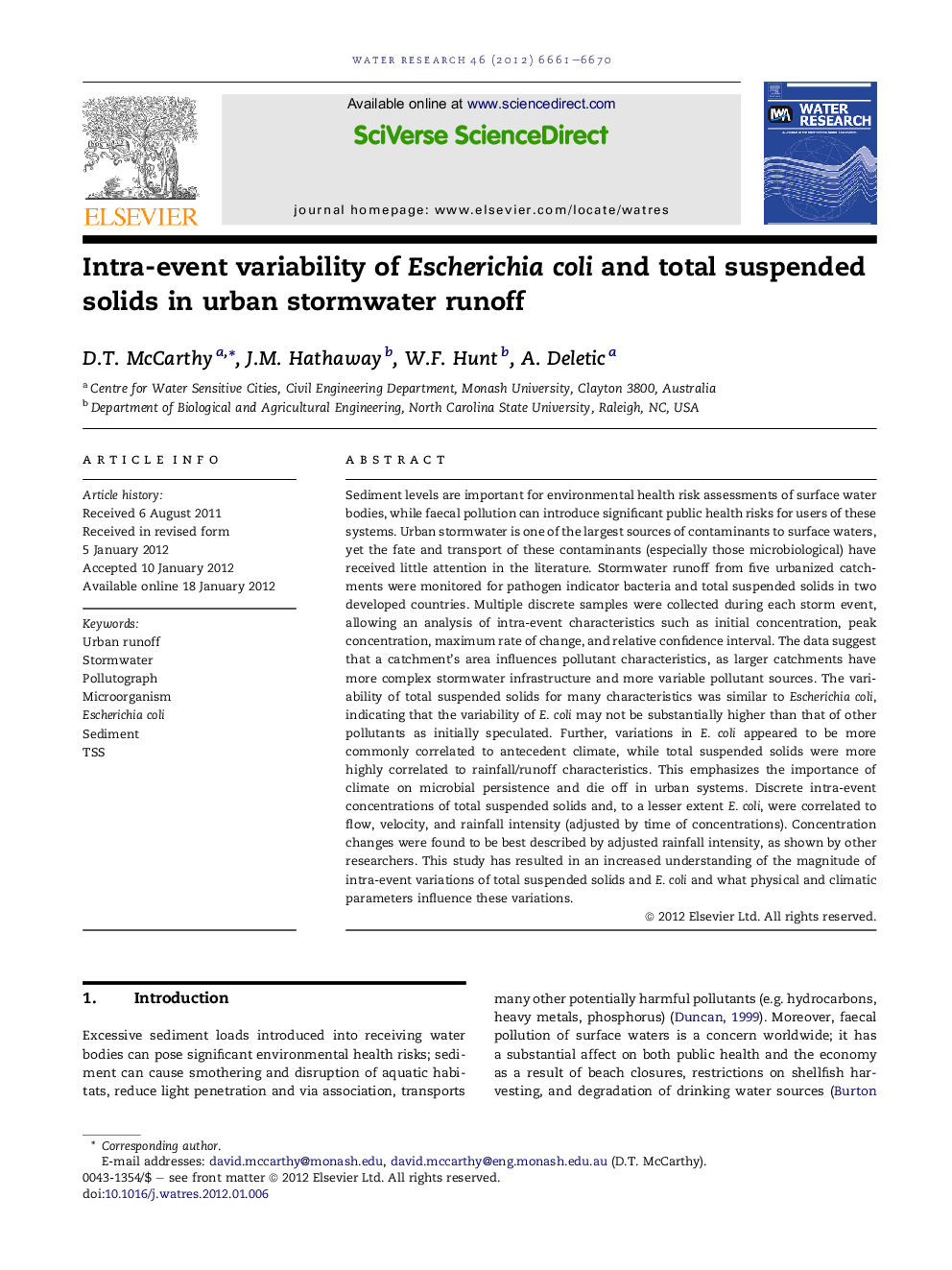| Article ID | Journal | Published Year | Pages | File Type |
|---|---|---|---|---|
| 4481871 | Water Research | 2012 | 10 Pages |
Sediment levels are important for environmental health risk assessments of surface water bodies, while faecal pollution can introduce significant public health risks for users of these systems. Urban stormwater is one of the largest sources of contaminants to surface waters, yet the fate and transport of these contaminants (especially those microbiological) have received little attention in the literature. Stormwater runoff from five urbanized catchments were monitored for pathogen indicator bacteria and total suspended solids in two developed countries. Multiple discrete samples were collected during each storm event, allowing an analysis of intra-event characteristics such as initial concentration, peak concentration, maximum rate of change, and relative confidence interval. The data suggest that a catchment’s area influences pollutant characteristics, as larger catchments have more complex stormwater infrastructure and more variable pollutant sources. The variability of total suspended solids for many characteristics was similar to Escherichia coli, indicating that the variability of E. coli may not be substantially higher than that of other pollutants as initially speculated. Further, variations in E. coli appeared to be more commonly correlated to antecedent climate, while total suspended solids were more highly correlated to rainfall/runoff characteristics. This emphasizes the importance of climate on microbial persistence and die off in urban systems. Discrete intra-event concentrations of total suspended solids and, to a lesser extent E. coli, were correlated to flow, velocity, and rainfall intensity (adjusted by time of concentrations). Concentration changes were found to be best described by adjusted rainfall intensity, as shown by other researchers. This study has resulted in an increased understanding of the magnitude of intra-event variations of total suspended solids and E. coli and what physical and climatic parameters influence these variations.
► The intra-event variability of TSS and E. coli in stormwater from five urban catchments was examined. ► Intra-event variability of TSS was higher than that of E. coli. ► Catchment area and land use influences pollutant variability. ► TSS in events relate well to hydrologic parameters (mostly rainfall intensities). ► E. coli was observed to be influenced by mainly climatic factors, and less so by rainfall intensity.
